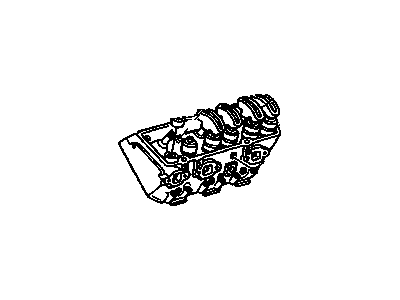
My Garage
My Account
Cart
Genuine 2005 Chevrolet Astro Cylinder Head
Head- Select Vehicle by Model
- Select Vehicle by VIN
Select Vehicle by Model
orMake
Model
Year
Select Vehicle by VIN
For the most accurate results, select vehicle by your VIN (Vehicle Identification Number).
1 Cylinder Head found
2005 Chevrolet Astro Engine Cylinder Head
Part Number: 12555630$449.11 MSRP: $713.03You Save: $263.92 (38%)Ships in 1-3 Business DaysProduct Specifications- Other Name: Head,Cyl; Cylinder Head
- Item Weight: 34.60 Pounds
- Item Dimensions: 23.5 x 9.9 x 8.9 inches
- Condition: New
- Fitment Type: Direct Replacement
- SKU: 12555630
- Warranty: This genuine part is guaranteed by GM's factory warranty.
2005 Chevrolet Astro Cylinder Head
We are your prime source for competitively priced and high-quality OEM 2005 Chevrolet Astro Cylinder Head. We provide you with parts that will allow you to save a lot of money without sacrificing quality. All our OEM parts are backed by the manufacturer's warranty and shipped out at a swift rate.
2005 Chevrolet Astro Cylinder Head Parts Questions & Experts Answers
- Q: How to clean, inspect, and service cylinder head on 2005 Chevrolet Astro?A: Thorough cleaning of the cylinder head(s) and related valve train components, followed by a detailed inspection, will enable you to decide how much valve service work must be done during the engine overhaul. Begin by scraping all traces of old gasket material and sealing compound off the head gasket, intake manifold, and exhaust manifold sealing surfaces, taking care not to gouge the cylinder head. Remove built-up scale from the coolant passages and use a stiff wire brush to clear deposits from various holes. Run an appropriate size tap into each threaded hole to remove corrosion and thread sealant, using compressed air to clear debris. Clean the rocker arm pivot stud threads with a wire brush, then clean the cylinder head with solvent and dry it thoroughly, using compressed air to speed up the process. Decarbonizing chemicals may be useful but should be handled with caution. Clean the rocker arms, pivot balls, nuts, and pushrods with solvent, ensuring they are dried thoroughly without mixing them up. Clean all valve springs, shields, keepers, and retainers one valve at a time to avoid mixing parts, and scrape off heavy deposits from the valves before using a motorized wire brush on the valve heads and stems. Inspect the head for cracks, coolant leakage, and other damage, replacing it if necessary. Check the head gasket mating surface for warpage using a straightedge and feeler gauge, and if warpage exceeds the limit, it can be resurfaced. Examine the valve seats for pitting, cracking, or burning, which may require professional service. Measure the valve stem-to-guide clearance with a dial indicator, and if there are concerns about the valve guides, they should be checked by a machine shop. Inspect each valve face for wear, deformation, and cracks, checking the valve stem for scuffing and the neck for cracks, replacing any that show signs of damage. Measure the margin width on each valve, replacing those with a margin narrower than 1/32-inch. Check each valve spring for wear and pits, measuring the free length and ensuring it meets specifications; any springs that are shorter should not be reused. Stand each spring on a flat surface to check for squareness, replacing any that are distorted. Inspect the spring retainers and keepers for wear and cracks, replacing questionable parts to prevent failure during operation. Check the rocker arm faces for wear and damage, inspect the pushrod ends for scuffing, and roll each pushrod on a flat surface to check for bending. Examine the rocker arm studs for damaged threads and secure installation, replacing any excessively worn parts. If the valve components are in poor condition, reassemble the valves in the cylinder head and follow valve servicing recommendations; if no excessively worn parts are found and the valve faces and seats are in good condition, the valve train components can be reinstalled without major servicing.






